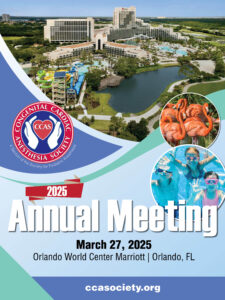Author: Sana Ullah, MB ChB, FRCA – Dallas, TX
An 8-month-old male infant is status post repair of a large perimembranous ventricular septal defect (VSD). After separation from cardiopulmonary bypass, the patient has the following vital signs: heart rate 130, blood pressure 80/45, and pulse oximetry 99% with a fractional inspired oxygen (FiO2) of 0.25. The post-repair transesophageal echocardiogram (TEE) reveals a small residual VSD. In order to determine if the VSD is hemodynamically significant, the surgeon samples blood from the superior vena cava (SVC) and the main pulmonary artery (PA), resulting in oxygen saturations of 60% and 80% respectively. What is the Qp:Qs?
EXPLANATION
Small residual ventricular septal defects (VSDs) are common after surgical repair and the decision to return to bypass is sometimes be difficult. The decision is based on TEE findings, direct pressure measurements in the right ventricle and PA, and a determination of the magnitude of the shunt by calculating the Qp:Qs ratio – where Qp is the pulmonary blood flow and the Qs is the systemic blood flow. The standard equation to calculate shunts in the cardiac catheterization laboratory is:
Qp:Qs = SaO2 – SmvO2 / SpvO2 – SpaO2
In this equation, SaO2 is the systemic arterial saturation, SmvO2 represents the mixed venous saturation, SpvO2 is pulmonary vein saturation, and SpaO2 is the pulmonary artery saturation. In the absence of an intracardiac shunt, the mixed venous saturation is sampled from the main pulmonary artery. However, in patients with left to right intracardiac shunts, the superior vena cava saturation more accurately reflects a true mixed venous saturation. In patients without an underlying pulmonary pathology, the pulmonary vein saturation is assumed to be 100% and thus equal to the systemic arterial saturation. To avoid a confounding impact of dissolved oxygen, blood samples should be taken at a low FiO2 of approximately 0.25-0.3. Therefore, in the operating room, the above equation can be simplified to:
Qp:Qs = SaO2 – SmvO2 / SaO2 – SpaO2
Substituting the data from the stem into this equation results in a Qp:Qs of 2:1. A Qp:Qs of more than 1.5-2:1 should prompt a return to bypass and revision of the repair. Although most residual VSDs are not hemodynamically significant and are likely to close over time, some studies have shown defects larger than three millimeters in diameter should be addressed surgically, which requires another period of cardioplegic arrest. Interestingly, a recent publication in the Annals of Translational Medicine by Cao et al has reported successful repair of residual VSDs on cardiopulmonary bypass but after aortic unclamping and with a beating heart. They reported good outcomes with no apparent complications. This strategy may represent an unnecessary risk for air embolism to the cerebral and coronary circulation.
REFERENCES
1. Joffe DC, Shi MR, Welker CC. Understanding cardiac shunts. Pediatr Anesth. 2018; 28:316-325. doi.org/10/1111/pan.11347
2. Bibevski S, Ruzmetov M, Mendoza L et al. The destiny of postoperative residual ventricular septal defects after surgical repair in infants and children. World J Pediatr Congenit Heart Surg .2020; 11: 438-443.
3. Cao Z, Chai Y, Liu J et al. Revising ventricular septal defect residual shunts without aortic re-cross-clamping: a safe and effective surgical procedure. Ann Transl Med . 2020; 8 (18):
1134. doi: 10.21037/atm-20-5041
